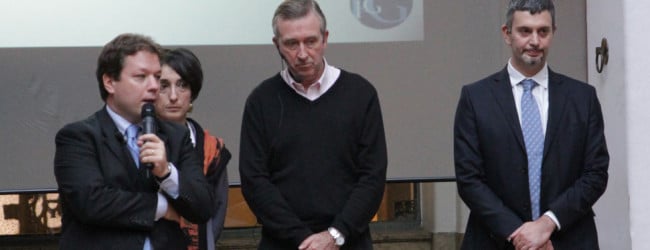
Smart Goals and the Comfort Zone
25 September 2013
Psychology, more caresses to boost self-esteem
23 October 2013Paul Ekman’s studies at the Festival of Psychology

Lies have short legs. Sacrosanct truth. Now more than ever. At the Milan Psychology Festival this morning, Paul Ekman’s studies on grimaces that would allow us to recognise lies irrefutably were presented.
The event was chaired by John Pearse, forensic psychologist at Scotland Yard and vice president of the Paul Ekman Group, and Diego Ingrassia of I&G Management.
The research, funded by the US government, is based on theories from the past, starting with Charles Darwin and Silvan Tomkins, passing through analyses carried out worldwide and investigating every lowest common denominator in facial expressions associated with emotions. An accurate and detailed research.
According to the studies, basic universal emotions are expressed in the same way by everyone on the planet.
Ekman coded the Facial Action Coding System (Facs), a method for interpreting even the smallest facial movements.
So even the smallest body gestures, tone of voice and gaze become unmistakable signals to investigate people’s credibility.
But these indicators alone would not be able to provide absolute certainties. It is necessary to identify those moments when verbal and non-verbal language contradict each other. These discrepancies do not automatically prove that a person is lying, but they can guide an attentive and trained observer towards the right questions, and allow him/her to direct the investigation towards the most credible areas.
In some fields of human activity, being able to correctly judge the trustworthiness of an individual is everything. In a police interrogation, being able to catch the slightest whiff of imposture would make it possible to avoid committing unforgivable miscarriages of justice; in a job interview, being able to discern serious candidates from less trustworthy ones would make it possible to avoid hiring individuals who would jeopardise the company and cause serious damage to society.
.
The validity of the theory has already been tested in America: “A few years ago, the US customs was detaining 72,000 people a year,” explains Diego Ingrassia, “but of these, very few were then detained as they were actually responsible for violations. In the year following the introduction of the Ekman method, the number of detentions dropped to about a third, but the number of arrests rose to over 150 people compared to 9 the year before’.
Lying is an everyday practice. Lying often has trivial motives behind it, indeed sometimes it is done with good intentions. So, is it always necessary to expose those who lie? “Lying is often a defence mechanism that causes no harm, and for some people, such as adolescents, it is an integral part of the growth process. In these cases it must be respected, so even if we sometimes realise that there is something strange in what our child is telling us, we must understand when it is appropriate to go deeper and reveal a lie, and when it is better to leave it alone,’ warns Diego Ingrassia, emphasising the importance of ethics and common sense to be used in these cases.
Costanza Di Nunno (Il Giornale, 17/10/2013)


